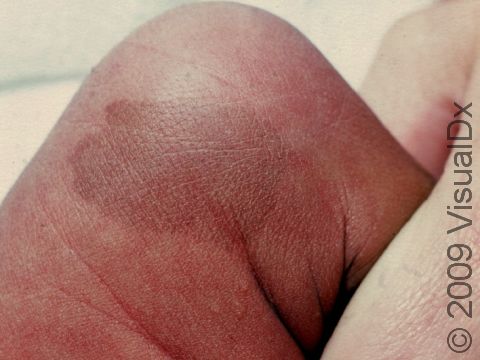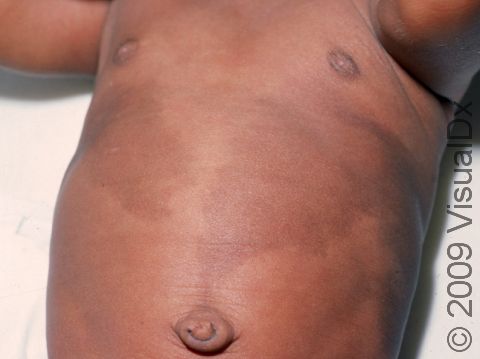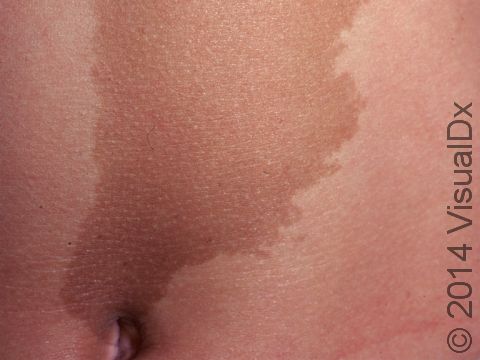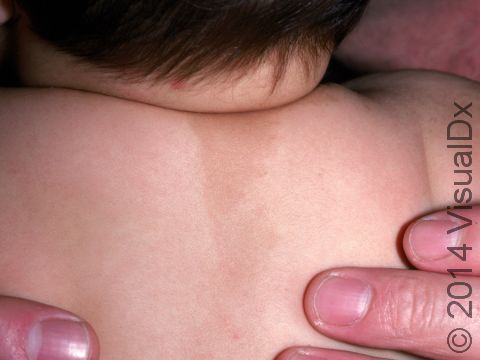Café au Lait Spot
A café au lait spot is a well-defined brown macule (small, flat area) or patch (flat area that is larger than a thumbnail). The spot is named after its color, which has been described as looking like “coffee with milk,” and the color can range from light to darker brown.
Café au lait spots usually appear first in early childhood, although they may be present at birth. They may be single or multiple, and they increase in size as the person gets older.
Café au lait spots can be indicators of certain more serious conditions, particularly neurofibromatosis, a genetic condition that can affect the skin and soft tissues (6 or more cafe au lait spots, freckles in the armpit and groin regions, as well as benign growths called neurofibromas), nerves, eyes, and bone.
Who's At Risk?
- Single café au lait spots are common, presenting in 10%-20% of the US population.
- Approximately 1% of healthy young adults have up to 3 café au lait spots.
- Café au lait spots are more common in individuals with darker skin colors (around 3% of Hispanic and 18% of Black newborns have a café au lait spot), and these spots have a darker pigmentation, compared to those seen in White individuals.
Signs & Symptoms
Light-to-dark-brown, well-defined, even-colored, and often oval, flat macules or patches anywhere on the skin except for the mucous membranes (inside the mouth, nose, or genital areas).
Self-Care Guidelines
There is no self-care necessary for café au lait spots. Treat this skin as you would any other skin.
Treatments
No therapy is needed for café au lait spots. Lasers may be used for cosmetic concerns, although the spot often comes back following laser treatment.
Visit Urgency
While café au lait spots are common, see a medical professional if your child has any unidentified pigmented lesions. Consult a medical professional if new café au lait spots continue to develop, if there are 6 or more café au lait spots, or if café au lait spots are accompanied by other skin conditions such as freckles in the armpits or skin growths.
Trusted Links
References
Bolognia J, Schaffer JV, Cerroni L. Dermatology. 4th ed. Philadelphia, PA: Elsevier; 2018.
James WD, Elston D, Treat JR, Rosenbach MA. Andrew’s Diseases of the Skin. 13th ed. Philadelphia, PA: Elsevier; 2019.
Kang S, Amagai M, Bruckner AL, et al. Fitzpatrick’s Dermatology. 9th ed. New York, NY: McGraw-Hill Education; 2019.
Paller A, Mancini A. Paller and Mancini: Hurwitz Clinical Pediatric Dermatology. 6th ed. St. Louis, MO: Elsevier; 2022.
Last modified on June 29th, 2023 at 11:17 am

Not sure what to look for?
Try our new Rash and Skin Condition Finder



